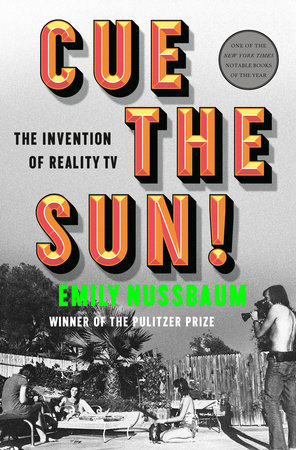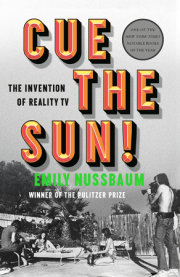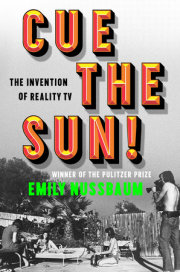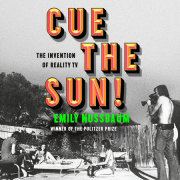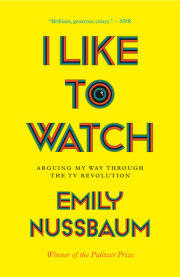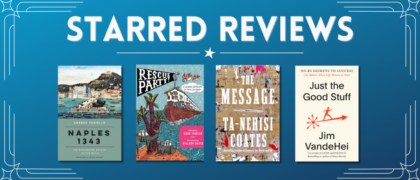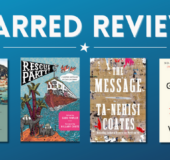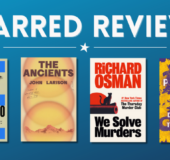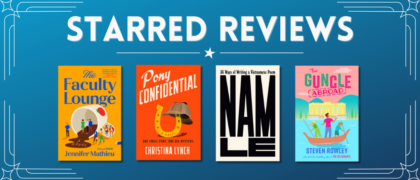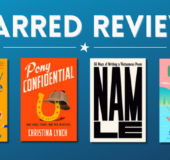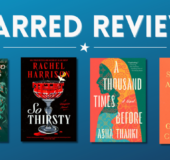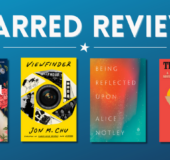1
The RevealQueen for a Day and Candid Camera
Dirty documentary set off its first moral panic in 1947, just after World War II. Radio still ruled the roost back then, as it had since the 1920s, broadcasting opera, jazz and news, comedy and Shakespeare, all of it live—a cozy console the whole family could huddle around. Now and then, there was a prestige blockbuster like Orson Welles’s War of the Worlds—a scripted sci-fi drama so realistic, listeners freaked out, convinced that aliens were invading the Earth, for real. If you were a radio writer or actor, you could make a nice living. If you were a star, you could make a killing.
Still, even in the early days, ordinary people sometimes stumbled onto the airwaves—and around the 1930s, disc jockeys began taking phone calls from listeners. These unknowns did something the pros had never done: They confessed their secrets to the world, liberated by the sensation of strangers listening in. It was the beginning of talk radio—the first strand of the “audience participation” trend, a fad that would jump to television in the late 1940s, like a tapped cigarette ash starting a forest fire. Pundits hated the audience participation shows from the start, a response that was saturated with class revulsion: These were vulgar programs, created by vulgar people, for vulgar people, about vulgar people. Worst of all, they were insanely popular.
One of the earliest of these DJ-pioneers was Lester Kroll, a former cab driver from New York City and the son of an immigrant lacemaker. In 1929, Kroll went through an ugly divorce, and then, after he refused to pay child support, got tossed into “alimony jail.” His months in the clink appear to have radicalized Kroll: He became an anti-alimony activist—and then a self-appointed expert on marriage itself. According to It Sounds Impossible, a dishy 1963 history of early radio written by former CBS executives Sam J. Slate and Joe Cook, the self-promoting Kroll, a wannabe playwright and an amateur lecturer on the Times Square “flea-circus belt,” found his way into radio through the Depression-era WPA, then shrewdly rebranded. By 1932, he was no longer a high school dropout: Instead, he was thought leader “John J. Anthony,” the highly educated founder of a “Marital Relations Institute.” He offered advice on the tiny Long Island station WMRJ, and soon, across the nation. “Never was a program concept uglier—or a show more fun to listen to than The Original Good Will Hour,” wrote Slate and Cook.
Each week, Anthony invited fifteen to twenty guests, chosen based on their letters, to come to his studio, then “eat their hearts out over who did what to whom at home.” The radio host’s visitors confessed to everything under the sun, from cheating to (on at least one occasion) murder. Critics sometimes suspected Anthony of using actors, but no fakery was required, according to Slate and Cook: A cadre of viewers stepped up right away, eager to “broadcast [their] troubles, anonymously or otherwise.” The show became a smash hit, particularly with women, who ate up the host’s confident, supremely smarmy advice, which often boiled down to “stop nagging.” By 1939, the show was airing on more than seven hundred stations and Anthony had become a tycoon, the Dr. Phil of his era—and also a juicy target for satirists, who mocked him as a maudlin phony.
The Good Will Hour got canceled, then re-upped, a few times, but by the time it ended in 1953, it had plenty of company on the dial, as radio producers encouraged regular people to step in front of the mic, for cash or kicks—and, often, for both. Some of these programs were traditional quiz shows, like Dr. I.Q. or Name That Tune, a tradition that went back to the 1923 man-on-the-street program Brooklyn Eagle Quiz on Current Events. But more anarchic formats bubbled up as well, relying less on skill than on their guests’ willingness to uncork and let loose. On People Are Funny, contestants took wacky dares, like checking a seal in to The Knickerbocker Hotel. On Welcome Travelers, train passengers spooled out personal stories. On Bride and Groom, couples got married, live, decades before The Bachelor was a dark gleam in reality producer Mike Fleiss’s eye. On Kiss and Make Up, Milton Berle judged marital fights, while on Rebuttal, media victims gave their side of the story. The most sadistic show of the bunch, Truth or Consequences, featured a buzzer and humiliating punishments for the losers.
For the ordinary Americans who agreed to appear on them, these programs were a lark—a quick, bracing splash of attention, with little downside. On the radio, you might become briefly famous, but it was stardom of an appealingly low-stakes type: When no one could see your face, you could be a celebrity to your neighbors while remaining anonymous in the larger world.
By the late 1940s, the audience participation formats had evolved into a robust genre, so ubiquitous that they were a threat to scripted shows and high-budget star performances. In 1948, the dryly scathing radio critic John Crosby, who wrote for the New York Herald Tribune, joked that there were so many audience participation shows on the air, they’d soon outnumber the fans who enjoyed them: “Eventually ALL the people will be tearing around from one radio studio to another, answering the questions and carting home the iceboxes. Nobody will have time to listen to the darn thing.”
Crosby, a Yale dropout who, like Lester Kroll, had originally intended to write plays, became, instead, the shrewdest observer of the audience participation era, which exploded just as he rejoined the Herald Tribune, in 1946, after a stint in the military. (A crime reporter when he first got the assignment, he didn’t even own a radio.) A genial literary assassin who once joked that his job was to be “literate about the illiterate, witty about the witless, and coherent about the incoherent,” Crosby devoted dozens of droll columns to these protoreality shows, taking potshots at their absurdity, their frivolity, and their commercialism. He was genuinely disturbed by one trend, however—the “misery shows,” in the tradition of Mr. Anthony’s call-in advice show, the kind of programming that was fueled by, and also designed to produce, tears and trauma.
In 1946, Crosby wrote a scorching pan of The Good Will Hour, repelled by Anthony’s “sanctimonious and infinitely complacent” schtick. Then, one month later, Crosby launched a full-scale attack on the audience participation genre, in a column titled “The Modern Thumb Screw.” It had a banger of a lede:
About two thousand years ago, a Roman emperor used to pitch winsome young Christian girls into his eel pond and watch with great enjoyment while they were devoured by the eels. This served two purposes. It fattened the eels for the table and it amused the emperor.
This practice has been illegal for some time but the enjoyment of human suffering, otherwise known as sadism, is still buried not too deeply in all of us. Since radio is always eager to gratify our instincts, particularly our baser instincts, it has devised its own eel pond, the human misery program.
Crosby described, in furious detail, a short-lived radio show, A. L. Alexander’s Goodwill Court, in which legal disputes were adjudicated, live, by a mediation board—a sort of great-grandfather to the 1980s small-claims court TV series The People’s Court. In one episode of Goodwill Court, wrote Crosby, a birth mother and a foster mother had sobbed as they fought over custody of a child, rattled by what the critic described as “mike fright,” the terror of speaking into the live microphone. The program amounted to “a peep show of the worst sort,” he wrote, comparing it to superior art forms. Fiction writers had the moral bandwidth to handle this depth of human suffering, he argued; nonfiction radio shows merely exploited it. “From Mr. Alexander’s program we get life in the raw without poetry, without art. The tabloid newspapers show us the undraped leg. The human misery program offers us the undraped heart—listen to it fizz.”
Other observers were more amused than outraged. The same year Crosby wrote “The Modern Thumb Screw,” Associated Press writer Jean Meegan published a more playful account of the new fad, with the heading “Critics Scream, Actors Howl, but Audience Participation Shows Go On and On and On.” Like Crosby, Meegan took a few shots at the new genre, quoting a psychologist who decried the hollow lives of guests, in a sniffy description that might condemn many modern podcasters: “Being 35 years old and living in Brooklyn isn’t much of an achievement, but on the radio it sounds meritorious.”
Copyright © 2024 by Emily Nussbaum. All rights reserved. No part of this excerpt may be reproduced or reprinted without permission in writing from the publisher.

